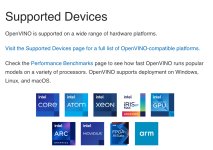Why is Intel struggling to get any traction in AI hardware? Intel has been working on this for years. What is holding them back
My view is that Intel has been struggling with 4 concurrent challenges:
1) Historically, the traditional Innovators Dilemma. The same force that enabled Intel (and to some degree AMD) to replace IBM mainframes and Sun servers in the server space with x86, thwarted their success in smartphones and discrete GPU/ GPU-based AI processors. Intel and AMD did remove the low end of the discrete GPU market with integrated GPUs, but because of the competition, they weren't able to monetize very well, and likely accelerated both NVIDIA's and AMD's push into higher-end GPU applications and eventually AI apps.
2) Product focus - Intel seems to be trying to win in the GPU visualization, AI and HPC markets with a broad array of organic and acquired solutions (x86 + SIMD math engines, FPGAs, GPUs, Gaudi, and Habana). Major undertaking just to bring those together under OneAPI, but that's just the beginning of providing a sufficient platform compared to NVIDIA and AMD.
3) Market structure - Lots of competitors in every segment with lots of different strategies. Pat made a lot of noise a couple days ago about pushing IT departments to deploy AI PCs, yet there are many sources for AI client computers - Apple (both Mac and iOS), AMD, Android phones via Qualcomm, etc. Apple, Google and Microsoft are the ones most likely to deliver killer-apps on the client side that drive businesses and consumers to upgrade. And on the GPU => AI Processor path for the data center, Intel is battling NVIDIA, AMD, the big CSPs like Amazon, Microsoft and Google that are building some of their own chips, plus new entrants like Groq and Cerebras. And foolishly, Intel has also chose to battle it out in the gaming and visualization space where AMD and NVIDIA are highly entrenched - Intel is till battling up the driver curve with the ARC line and being forced to live off thin or no margins.
4) Embattled cash cow products - Intel is battling to grow against entrenched players, while protecting its embattled cash cows from AMD and TSMC growth, and shrinking data center $$ for general purpose servers. More challenging for them to spend the way they need to on new products and product ecosystems while they are also investing in foundry capacity and protecting existing money-making products.




